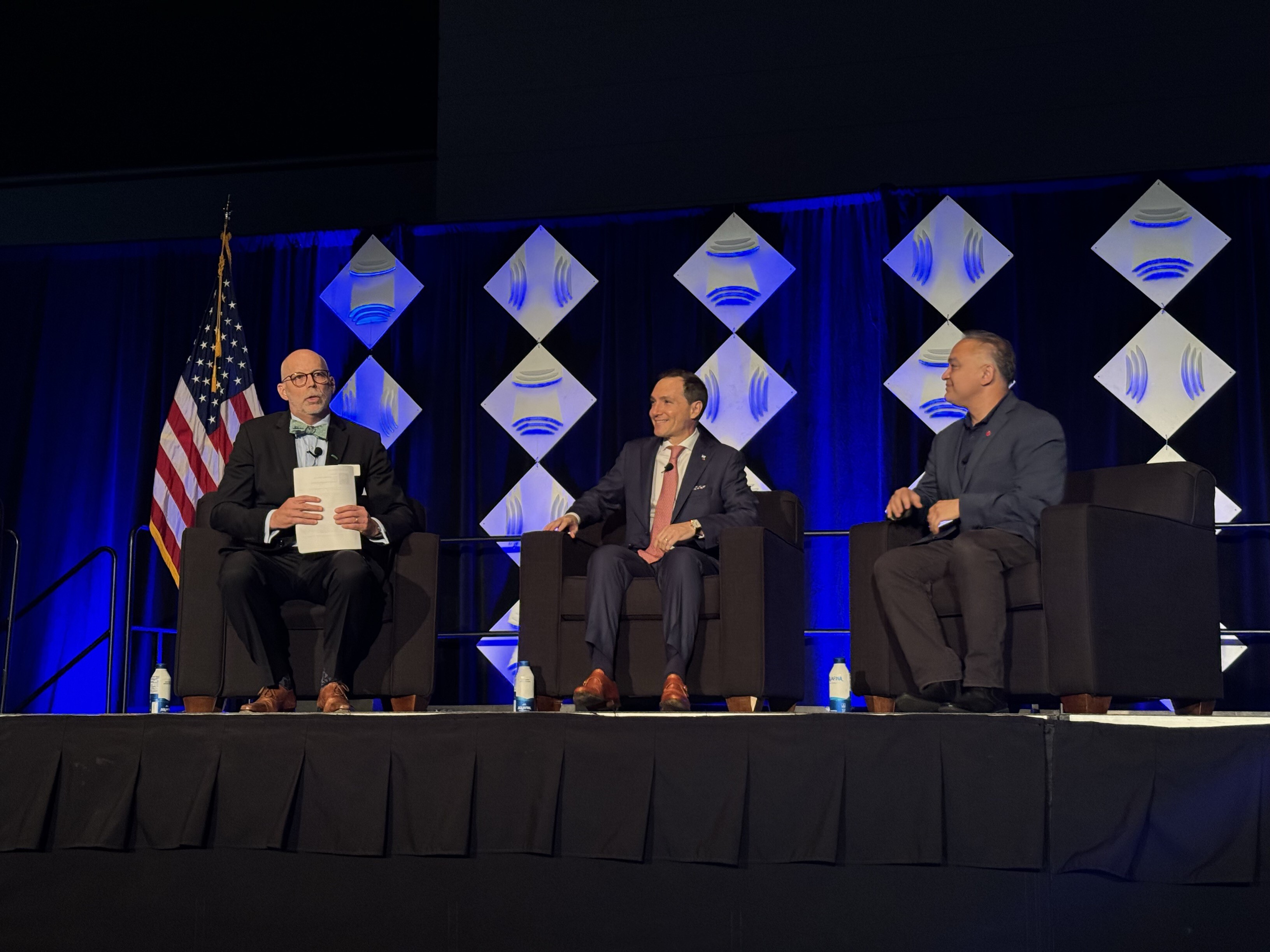7 Factors That Support Successful Human Error Investigation

An Improved Human Error Investigation Process
NSF Health Sciences Executive Director Jim Morris recently presented the webinar “Investigations Involving Human Error — Getting Into the Right Mindset” as part of our pharma biotech webinar series. He looked at:
- Key considerations for managing the investigations system in companies.
- Seven factors to help you get into the right mindset when conducting a human error investigation in pharma.
- How you can improve your investigations program and impress regulators with your progress.
Watch the Webinar
Key Considerations for Successful Human Error Investigation
These points reflect common weaknesses observed at companies seeking to improve their GMP investigations programs:
- We need to treat human error differently and get into the right mindset. Develop an empathetic understanding of the underlying causes, and “get in the tunnel” to understand the context at the time the event occurred.
- Triage our investigations based on risk. A one-size-fits-all approach to an investigation program will not work. Those investigations presenting greater risk from a patient safety perspective warrant in-depth root cause analyses.
- Help ensure that we learn from operations and operationalize that learning, embedding techniques which tap the knowledge and experience of personnel on the shop floor and/or at the lab bench.
- Investigators must keep things simple and avoid the inclination to identify multiple, complex corrective and preventive actions (CAPAs). Robust and effective CAPAs should be specific, measurable, achievable, relevant and timely.
- Finally, we need the support and understanding of the regulators evaluating the company investigation systems, so they recognize ongoing improvements and are pragmatic in their review of investigation reports.
Begin Investigating Human Error by Going to Gemba
You might be managing several hundred or even over 1,000 investigations in a year at your company site. This is achieved by applying risk-based triage to devote more time to those investigations considered to be more critical from a product quality and patient safety point of view, supported by a robust investigation system with duly qualified investigators.
How do we unpack an investigation in which there are clear human contributing factors? Think about this definition of error provided by James Reason: “Error is a planned sequence of mental or physical activities that fails to achieve its intended outcome.”
Our first step in unpacking an investigation related to human error and completing a thorough human error root cause analysis is to truly understand that sequence. And the best way to achieve this understanding is by going directly to the source (going to Gemba):
- See where the work is being conducted and where the value is being created; approach this with an understanding of the process flow.
- Observe with intent to understand what is happening.
- Go in with other subject matter experts.
- Observe the setup, execution and cleanup and understand how documentation is being completed.
- Talk to the individuals carrying out the work.
The risk of error is a function of the physiological factors which have to do with us as individuals — essentially, how we are wired — and is also a function of those aspects that are external to us: the organizational factors, the nature of the task and the complexity of that task.
We can almost predict if an error will occur based on these factors. In other words, depending on the individual, the environment and the nature of the task, we might see an error of some variety.
With the general assessment points mentioned earlier and overall context in mind, let us look at how we can get into the proper mindset when beginning an investigation.
Human Error Checklist: The Seven Factors That Support Better Human Error Investigation in Pharma
The Right Environment
Create an environment where people feel secure and can account for their actions retrospectively. This means creating a site culture which:- Encourages questioning
- Remains open and blame-free
- Is transparent
- Focuses on continuous improvement
Avoid the Smoking-Gun Approach
Avoid the tendency to look for the smoking gun or the “shiny object.” What we need to do is understand the context. Sydney Decker's “Field Guide to Understanding Human Error” references examples in aviation, and his argument is that to truly carry out an investigation, you must get back into the cockpit to try to understand the context that caused the pilot to make a decision that was fateful, if not fatal. His analogy of getting back into the cockpit or “the tunnel” is extremely powerful.
The application of root cause tools helps assign probabilities or weights (high, medium and low) to drill down on potential causes and confirm, via some additional hypothesis testing, the most probable root cause. However, we often see in many investigations the tendency to jump on the first root cause. We need to avoid this, as it can take us down the wrong path and waste valuable time.
Think Contributing Factors
Consider the physiological factors, those associated with the person performing the task and those organizational factors related to the organization, the design of work, work layouts and other such issues. And of course, we must think about the task itself. Error is rarely associated with a single factor, and it is the relative contributions of these factors that resulted in an error. We need to understand the contributing factors before we can select appropriate CAPAs.
Find an Investigative Tool Which Helps and Use It Well
We need to have something that gives us the ability to brainstorm effectively and tease out the contributing factors, whether physiological or organizational. The tool should also help us build some discipline and serve as a memory aid. When used effectively, it will help identify the root cause(s) and ensure that there is a clear link between the root cause(s) identified and the CAPAs selected.
At NSF, one tool we put forward is the Contributing Factors Worksheet. This worksheet guides you through identifying your problem and the underlying issues associated with that problem; then it prompts you to look at the contributing factors, on both the human and the organizational side. With this information, you can identify potential actions and select appropriate CAPAs.
Do Not Spend Too Much Time Worrying About Categorization
Categories are useful because they help us facilitate trending and analysis. They also help us focus on the problem, not the person.
Select categories that are going to be actionable. Think about the context of your operations because, ultimately, you need to categorize in a manner that prompts action when you see a trend developing related to a particular category.
Have the Confidence to Tackle Underlying System-Related Risk
Often what we find is a tendency to stick with that tight time frame of 30 days and put a band-aid solution in place to address the problem, without connecting the dots or recognizing that there is an underlying system-related problem that needs to be addressed. This approach may provide a temporary fix, but the issue will eventually return.
For example, if you have reoccurring issues with equipment, you will want to look at your equipment qualification program and/or maintenance program. In this example, suppose you have identified factors that impact your filling operation and are experiencing issues with weight control. This will likely point to questions that could have been raised during equipment qualification. This line of investigation may prompt you to identify meaningful improvements for your equipment qualification program.
Don't Grasp at Straws If You Cannot Establish Root Cause
Rushing to identify a CAPA to close out an investigation will not lead to a long-term solution. Perhaps you did not actually identify a root cause after carrying out root cause analysis. You may therefore choose to collect additional data which will help establish the root cause should the problem reoccur. This decision to monitor and take no immediate action is perfectly acceptable if properly justified on the basis of risk to patient safety.
Recognizing this pragmatic approach and avoiding the tendency to rush to CAPA is where we would sometimes benefit from further regulatory agency understanding (see number five under “Key Considerations for Successful Human Error Investigation” above). Some investigations do not lead to root cause very easily, and the rush to identify CAPAs risks unnecessarily complicating operations.
Next Steps for Improving Human Error Investigation in Pharma
I have provided high-level considerations and tips based on my experience working with companies to improve their investigations programs and help them develop the right mindset when investigating human-error-related events. Still, you may be asking, “Where should I start?”
If you are experiencing issues with investigating human error, consider the tools you currently use for root cause analysis, adapt these to ensure that contributing factors explaining human error are part of your toolbox and follow the human error checklist above.
If you are looking to make long-term improvements and reduce incident reoccurrence rates, consider the principles of operational learning and establish a plan to embed these principles in your operations — tapping the knowledge of those at the sharp end, where you will see the most self-sustaining improvement in operations. NSF is also available to help.
Our consultants and trainers are experts in the areas of human error reduction and operational improvement. We have a library of articles, white papers and videos available on our website. Access the library now.
Our training division delivers in-house and public training courses on a wide range of pharmaceutical issues, including human performance training. Learn more about its services.
If you have questions or are seeking advice on how to improve your investigations program, please contact Jim Morris or one of our other experts by completing the web form below, entitled “Ready to Begin the Process.”
Ready to Begin the Process?
Contact us with questions or to receive a quote.
Resources
News

NI Protocol, FDA CBER Reorg & More — March ’22 Pharma News
March 1, 2022
Meet NSF’s Pharma Experts in 2022
February 24, 2022
NSF EyeSucceed’s Augmented Reality (AR) Is Transforming the Food Industry
August 24, 2021How NSF Can Help You
Get in touch to find out how we can help you and your business thrive.

What’s New with NSF

NSF Shanghai Named Critical Site for NSF/ANSI 455 and NSF/ANSI 173 by ANSI National Accreditation Board
July 26, 2024
NSF Takes Center Stage at NEHA Annual Education Conference
July 25, 2024
NSF Asia Pacific Showcases Hospitality Solutions at THAIFEX HOREC Asia 2024 in Bangkok, Thailand
July 4, 2024


